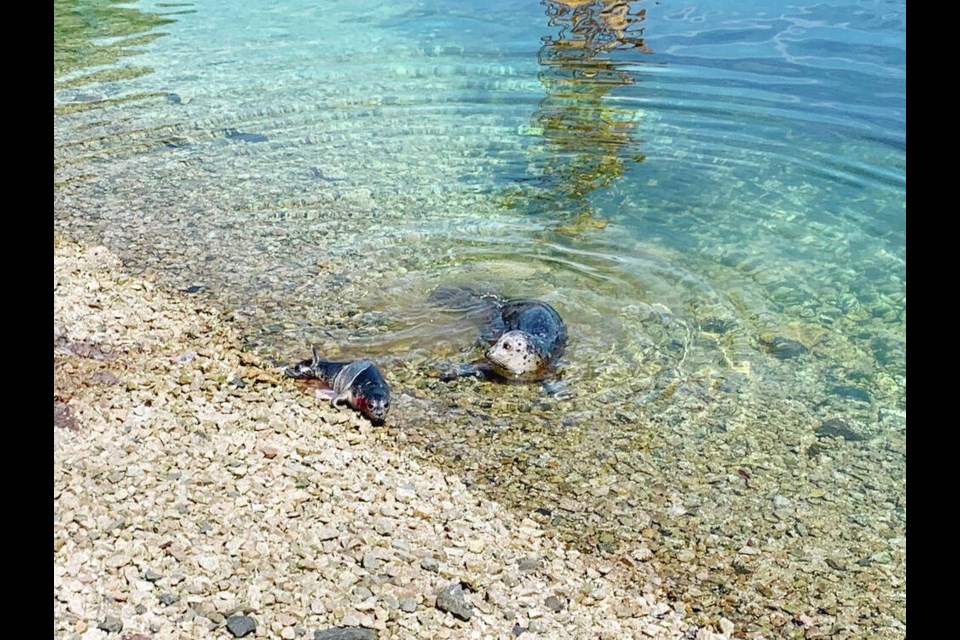The birth of a seal pup at CFB Esquimalt is a small sign of hope for an ongoing restoration project, said the navy base.
The harbour seal pup was born July 21 at the Esquimalt Harbour at the site of what was once a marine railway, one of several locations where contaminated material was excavated from the seabed and adjacent shoreline and replaced with clean substrate.
“It probably wasn’t the best environment for things to want to complete their life cycle, but it certainly is in better condition now,” said Mike Bodman, CFB Esquimalt’s base safety and environment manager.
Lindsaye Akhurst, manager of the Vancouver Aquarium Marine Mammal Rescue Centre, said harbour seals usually pick a quiet beach to have their pups, but that isn’t always the case. The organization has rescued two or three animals from the shoreline around CFB Esquimalt this year.
“It’s not an uncommon area for harbour pups to find themselves,” she said. “We do see them out there. Not in big numbers, but we do see them and rescue them from the base.”
The seal’s birth comes after five years of active underwater remediation efforts at the harbour, funded through the Federal Contaminated Sites Action Plan. Work has been completed on 12 contaminated sites at CFB Esquimalt, and another four will be addressed in the coming years, Bodman said.
“Esquimalt Harbour has been used and abused here for quite a long time in the sense of past practices, 150 years ago up into the later parts of the last century,” he said. “There was a lot of dumping of material and garbage put over the side, spills happening. A lot of that pollution has persisted in the harbour and gotten into some of the sediment.”
But when the Department of National Defense took over stewardship of the base’s land, which spans 354 hectares, it began a series of cleanup projects, removing contaminants and backfilling the sea floor with clean material.
“Hopefully with time, kelp and fish kinda move into those clean areas and provide good substrate for Mother Nature to do her thing,” Bodman said, adding that increasing marine-life sightings have been an encouraging sign for staff.
The impact of the cleanup work is being measured through a series of surveys in a monitoring program that will continue over the next five to 10 years.
“The signals we’re measuring might validate the anecdotal observations,” Bodman said.
Indicators such as the state of bird, kelp and marine life populations will help DND paint a picture of the harbour’s condition, but in the meantime, sightings of feeding orcas and grey whales, herring spawn and seal pups provide hope that the harbour can one day be fully restored.
“Adding all these things up — they are exciting and positive things. but I wouldn’t say our job is done,” Bodman said.
There have been no confirmed sightings of the seal pup since it was spotted in July, but the pups, who nurse often in the first four to six weeks, quickly triple their body weight and become mostly solitary.
Seal-pupping season is from May to September, peaking from mid-July to mid-August. Akhurst said anyone who sees a marine mammal in distress is encouraged to call the Marine Mammal Rescue Centre at 604-258-SEAL (7325).
Taking a picture can also help the rescue crew, though avoid getting too close, Akhurst said. The Marine Mammal Rescue Centre currently has about 71 seal pups in its care.



